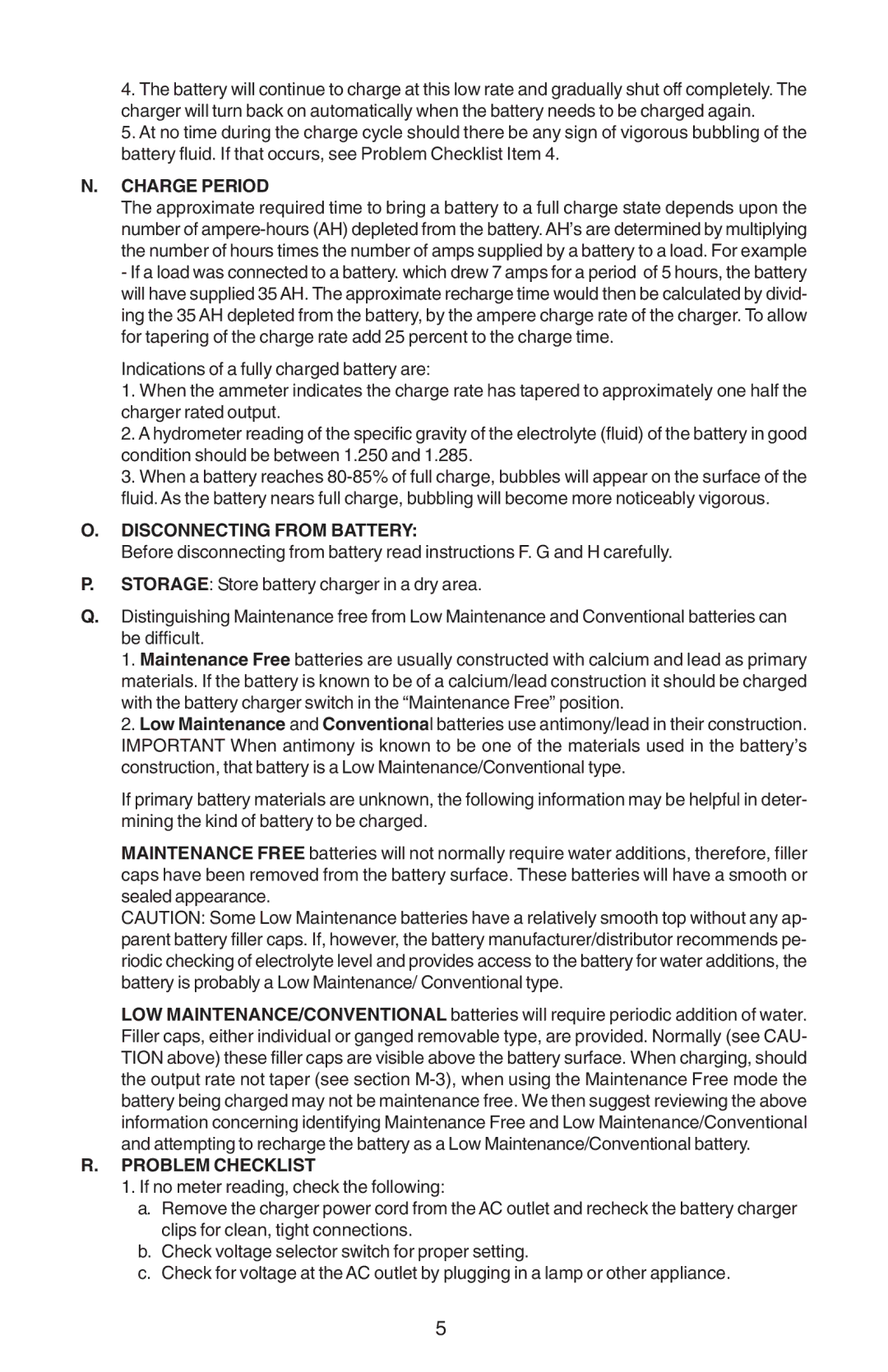4.The battery will continue to charge at this low rate and gradually shut off completely. The charger will turn back on automatically when the battery needs to be charged again.
5.At no time during the charge cycle should there be any sign of vigorous bubbling of the battery fluid. If that occurs, see Problem Checklist Item 4.
N.CHARGE PERIOD
The approximate required time to bring a battery to a full charge state depends upon the number of
Indications of a fully charged battery are:
1.When the ammeter indicates the charge rate has tapered to approximately one half the charger rated output.
2.A hydrometer reading of the specific gravity of the electrolyte (fluid) of the battery in good condition should be between 1.250 and 1.285.
3.When a battery reaches
O.DISCONNECTING FROM BATTERY:
Before disconnecting from battery read instructions F. G and H carefully.
P.STORAGE: Store battery charger in a dry area.
Q.Distinguishing Maintenance free from Low Maintenance and Conventional batteries can be difficult.
1.Maintenance Free batteries are usually constructed with calcium and lead as primary materials. If the battery is known to be of a calcium/lead construction it should be charged with the battery charger switch in the “Maintenance Free” position.
2.Low Maintenance and Conventional batteries use antimony/lead in their construction. IMPORTANT When antimony is known to be one of the materials used in the battery’s construction, that battery is a Low Maintenance/Conventional type.
If primary battery materials are unknown, the following information may be helpful in deter- mining the kind of battery to be charged.
MAINTENANCE FREE batteries will not normally require water additions, therefore, filler caps have been removed from the battery surface. These batteries will have a smooth or sealed appearance.
CAUTION: Some Low Maintenance batteries have a relatively smooth top without any ap- parent battery filler caps. If, however, the battery manufacturer/distributor recommends pe- riodic checking of electrolyte level and provides access to the battery for water additions, the battery is probably a Low Maintenance/ Conventional type.
LOW MAINTENANCE/CONVENTIONAL batteries will require periodic addition of water. Filler caps, either individual or ganged removable type, are provided. Normally (see CAU- TION above) these filler caps are visible above the battery surface. When charging, should the output rate not taper (see section
R.PROBLEM CHECKLIST
1.If no meter reading, check the following:
a.Remove the charger power cord from the AC outlet and recheck the battery charger clips for clean, tight connections.
b.Check voltage selector switch for proper setting.
c.Check for voltage at the AC outlet by plugging in a lamp or other appliance.
5
